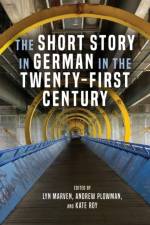av Katharina Gerstenberger
1 725
Essays examining representations of disaster in German and international contexts, exploring the nexus between disruption and recovery through narrative from the eighteenth century to the present.Destroying human habitat and taking human lives, disasters, be they natural, man-made, or a combination, threaten large populations, even entire nations and societies. They also disrupt the existing order and cause discontinuity in our sense of self and our perceptions of the world. To restore order, not only must human beings be rescued and affected areas rebuilt, but the reality of the catastrophe must also be transformed into narrative. The essays in this collection examine representations of disaster in literature, film, and mass media in German and international contexts, exploring the nexus between disruption and recovery through narrative from the eighteenth century to the present. Topics include the Lisbon earthquake, the Paris Commune, the Hamburg and Dresden fire-bombings in the Second World War, nuclear disasters in Alexander Kluge's films, the filmic aesthetics of catastrophe, Yoko Tawada's lectures on the Fukushima disaster and Christa Wolf's novel Storfall in light of that same disaster, Joseph Haslinger and the tsunami of 2004, traditions regarding avalanche disaster in the Tyrol, and the problems and implications of defining disaster. Contributors: Carol Anne Costabile-Heming, Yasemin Dayioglu-Yucel, Janine Hartman, Jan Hinrichsen, Claudia Jerzak, Lars Koch, Franz Mauelshagen, Tanja Nusser, Torsten Pflugmacher, Christoph Weber. Katharina Gerstenberger is Professor and Chair of the Department of Languages and Literature at the University of Utah. Tanja Nusser is DAAD Visiting Associate Professor of German at the University of Cincinnati.


